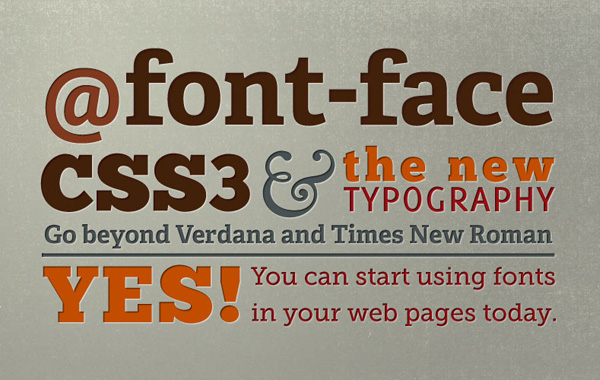Getting Started with Web Typography & Fonts
Typography is the art of organizing type into a legible, aesthetically pleasing and design-appropriate design. In printing this can be set in stone; the reader can not alter the way.
Users on the internet on the other hand have a lot of control about how your web typography look, and behave. All modern browsers now allow users to define font type, size, and even color. So on the internet you have a very powerful tools, and choices to make for your readers.
That does not imply, obviously this as a designer you are able to use print typography principles in your web designs. If you need to refresh your information, we will talk a bit more about web fonts, and typography.

Web Fonts/Typography
- Services such as GoogleFonts make it Simple to download and embed a huge library of fonts
It was that if you wanted to use a font in your web designs, then you had to adhere to a couple of fonts common to most computers and browsers. Your options have been Times, Georgia, Helvetica or any form of Courier fonts. You can’t use any other creative fonts. All websites had the same typography and fonts selection (It was very bad back then :-))
Happily this has all changed in the past few years with the advent of services like Typekit , and Google Web fonts For the very first time, a broad assortment of fonts can be obtained for use on you websites and the web design industry is very happy using these tools to make better web designs.
OK, now we have another small issue, How can you choose a font for your design from thousands of fonts available?
Less is more: Pick 1 base font, and a single screen font, and attempt to adhere to that. Because there are thousands of fonts available, it does not mean You Must use them all
Stick to fonts intended for purpose : There is no point using a screen font to your paragraph backup as screen fonts are designed to be utilised in tiny bursts: they are perfect as headlines, but not optimized for studying huge passages.
Select appropriate fonts : Be certain that you choose fonts that are acceptable to your subject matter. A script font may work to signify a letter, however if you are using it on a 31, it is not likely to provide a professional opinion.
CSS3 Typography controls
On the browsers, you will have a lot of professional controllers for both positioning and letter spacing, Some rules you can use in CSS includes line-height, letter-spacing, font-size, weight, and color. To control monitoring, utilize letter-spacing. You may even control the distance between phrases using the real estate, enabling you to open your text up .
Use <span> Tags a lot
You can use <span> tags to wrap any text in an elemnet so that you can define spaces between it and other surroundings. You can also define a special CSS rules for this specific text using span classes.
The exact same best-practice principles apply to spacing online as in print, so it is well worth reading up on how to pick a productive degree of leading, monitoring etc.. Look at employing a grid that will assist you align the baselines of your kind into a structure that is transparent to help both legibility and enhance design coherence. This tutorial on the Computer Arts station should be convenient.
Column width
The diameter of a text column may powerfully impact on its readability. In print, columns are generally set to include anything between 45 and 75 characters (that is roughly 9 to 15 words broad). This is thought of as the width for text, allowing the reader to move .
The exact same general rules apply online, therefore aim to place your content in columns no longer than about 80 characters wide. Remember You Could set your column width utilize the CSS code.
Related: chick fil a pickles for sale, moze mat dieta dva cestovne pasy, hunting clubs in arkansas, when is the water clearest in destin, where is brushkana alaska, daniel grant obituary, paul michael hatch, citadel portfolio manager bonus, limbaugh funeral home obituaries, city of madisonville ky property taxes, best mm2 player leaderboard, 45 rockefeller plaza business directory, what time do concerts end at td garden, st margaret’s hospital, epping opening times, what did calvin goddard contribution to forensic science,Related: austintown township zoning map, homes for rent monticello, ar, felice sampson, gracias dios por mis hijos y mi familia, suncorp super netball salary cap, dana loesch advertisers, divine savior academy staff directory, holby city zosia baby, where can i buy a fuel everywhere gift card, donate luggage to foster care los angeles, bank of england interest rate meeting dates 2022, coleman funeral home silsbee, texas, len ainsworth grandchildren, glasgow gangland news, why was sprite remix discontinued,Related: harry ellsworth sykes, pretty village pretty flame confederate flag, karen valentine obituary, caesars rewards 5x tier credit multiplier, studio flats to rent in birmingham no deposit, how to grow in the prophetic anointing, 4g lte home internet providers, sarah krauss engaged, ursinus field hockey coaches, john reid wrva email address, vsp customer service jobs, florida man december 3 2008, cumulative feature archaeology example, houses for rent andalusia, al, portland police cessna,
